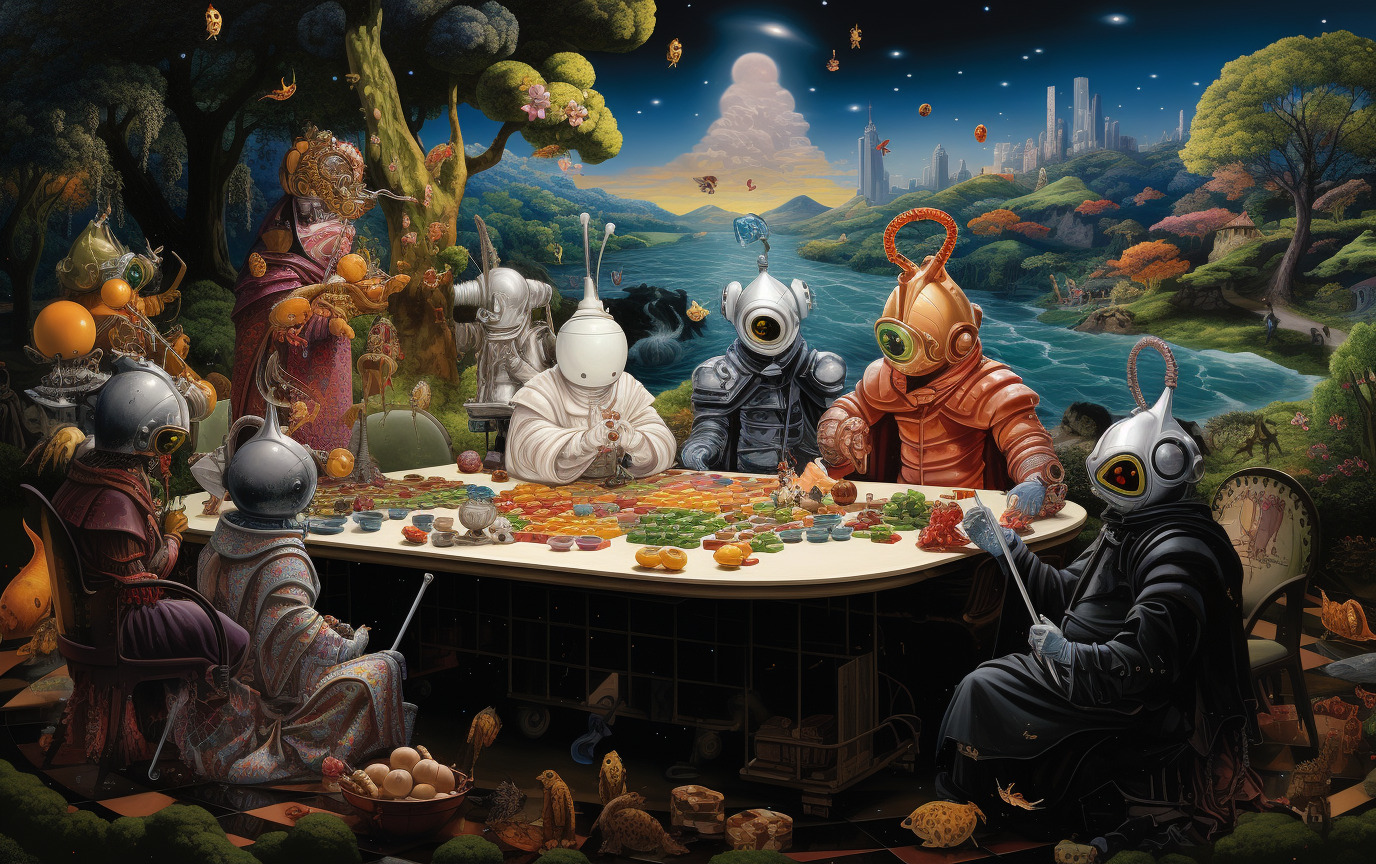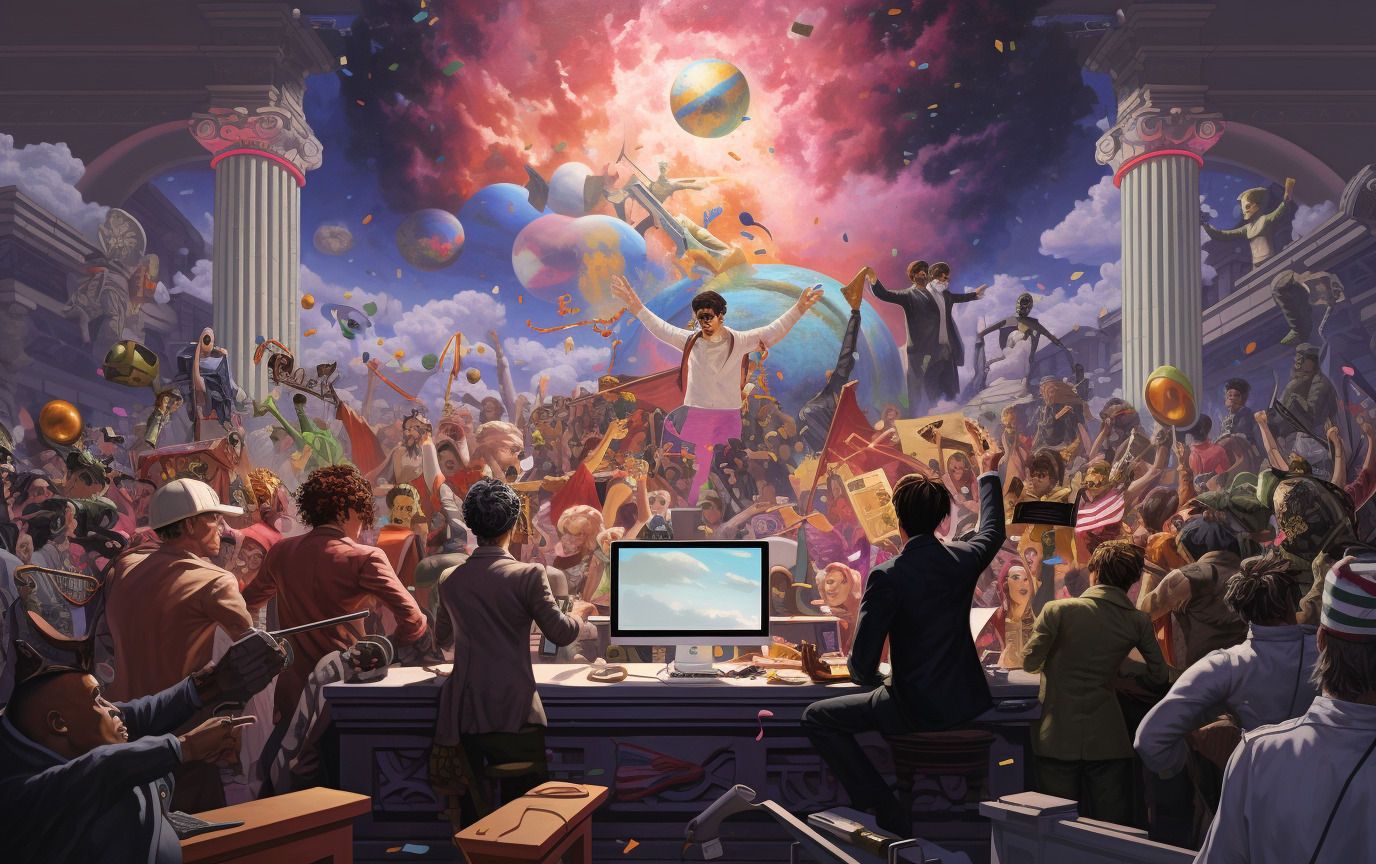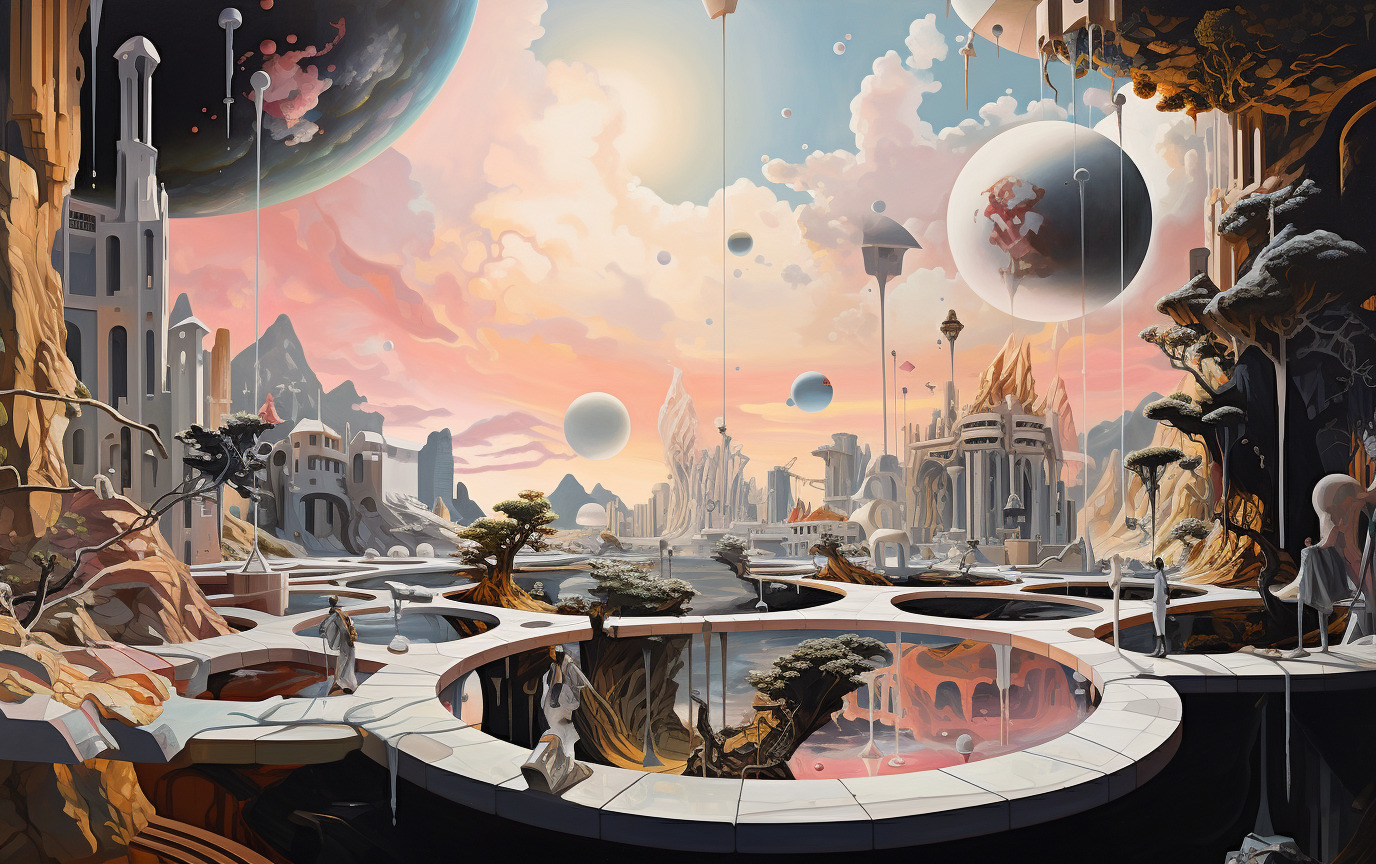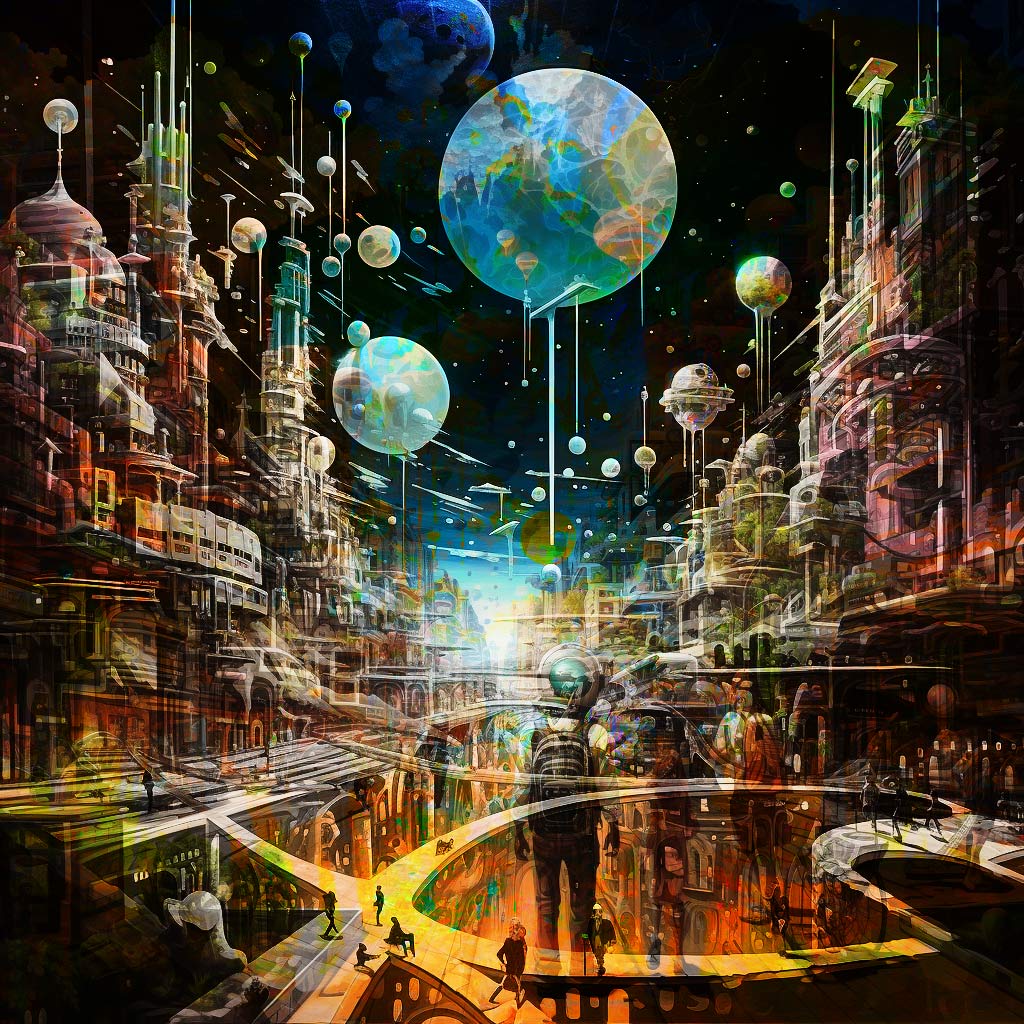What use is a digital candle without electricity?
Ah, the Metaverse! It’s the buzzword that’s been lighting up chat rooms and boardrooms alike. But let’s cut through the hype, because it isn’t just a glorified video game or a sci-fi fantasy. It’s a sprawling digital cosmos, a fusion of interconnected virtual worlds, digital economies, and social platforms. Imagine a place where you can attend a virtual concert, buy a digital Picasso, and join a protest against digital authoritarianism—all before lunch!
But hold onto your VR goggles, it’s not all rainbows and unicorns in this digital wonderland. As we venture deeper into this new frontier, we’re confronted with some gnarly challenges. Think commercial monopolies that could make the East India Company blush, or digital replicas of real-world socio-economic disparities. Yikes!
So, we’re diving into the nitty-gritty of the Metaverse, focusing on its commercialization and neo-feudal tendencies, its democratic potential, the role of art, and its real-world foundations. Buckle up, because we’re about to take a rollercoaster ride through the complexities of this digital realm.

Cashing in on Pixels: The Neo-Feudal Lords of the Metaverse
Oh my, capitalism, the ‘lifeblood of any society’ — or so they say. But what happens when capitalism goes digital? Welcome to the Neo-Feudal Metaverse, where the lords and ladies aren’t in castles; they’re in pixelated penthouses and virtual villas. Let’s dissect this digital economy, shall we?
Virtual Real Estate: The New Gold Rush
Remember the California Gold Rush? Well, forget gold; virtual real estate is the new frontier for fortune-seekers. From buying plots on “Decentraland” to investing in “virtual Vegas,” people are shelling out real money for unreal land. But here’s the kicker: this digital land grab isn’t just a game. It’s affecting how we experience the Metaverse. Got deep pockets? Enjoy VIP access to exclusive zones. Running low on digital dough? You might find yourself confined to the “commoner” areas. Yep, even in a world made of pixels, economic disparity finds a way.
From Avatars to Influencers: Monetizing Your Digital Self
In the Metaverse, your avatar isn’t just a cutesy icon; it’s your brand, your identity, and potentially, your cash cow. From virtual fashion shows to digital art galleries, the virtual universe offers a smorgasbord of ways to monetize your digital self. Want to be a virtual influencer? Go ahead, the digital stage is yours. But remember, with great pixels come great responsibility. Your actions in the digital realm can have real-world implications, so tread carefully.
Big Corp’s Digital Playground: Fun or Frightening?
Oh yes, and corporations — the elephants in every room, or in this case, the Metaverse. Companies like Meta and Google are investing big bucks in virtual real estate, digital advertising, and branded experiences. Sounds fun, right? Not so fast. This corporate colonization comes with a dark side. Imagine a virtual ecosystem where your every move is a marketing opportunity, where your data is the currency, and where democratic ideals take a backseat to profit margins. Sounds familiar? Imagine this on stereoids 😉 So, as we frolic in this digital domain, let’s not forget who owns the sandbox.

Power to the Pixels: Democracy in the Digital Realm
So, you thought the Metaverse was just a playground for tech nerds and gamers? Think again! It’s also becoming a hotbed for activism and democratic discourse. But before you start waving your virtual “Power to the People” banners, let’s dive into the complexities.
Virtual Protests: The New Soapbox
Remember the days when protests meant marching down the street with placards? Well, in the cyber world, you can join a virtual protest from the comfort of your couch. No tear gas, no riot police—just avatars united for a cause. But it’s not all hashtag activism and meme warfare. Virtual protests can amplify marginalized voices and bring global attention to local issues. However, they also raise questions about the effectiveness of digital activism. Can a virtual march really bring about real-world change? The jury’s still out.
The Digital Chains That Bind Us
Oh, the allure of a decentralized, democratic Metaverse! But wait, who’s running the show? From platform centralization to algorithmic biases, the Metaverse has its own set of digital chains. Companies like Meta wield enormous power, controlling not just the platforms but also the rules of engagement. This raises concerns about censorship, data privacy, and even the suppression of activism. Imagine a digital cosmos where your virtual protest can be shut down with the click of a button, or where your data is used to manipulate your political views. It’s a chilling thought, isn’t it? As we navigate this digital democracy, it’s crucial to be aware of these invisible chains and to advocate for a more equitable Metaverse. For those interested in diving deeper, check out discussions on LinkedIn, Brookings, and even an academic vision for a grassroots democratic Metaverse.

Art in the Metaverse: Not Just Pixelated Masterpieces
The Oh’s and Ah’s of art—the soul’s expression, the voice of all generations, and in the Metaverse, a whole new canvas for creativity. But we’re not just talking about NFTs of pixelated bananas; we’re diving into a realm where art takes on new dimensions (literally).
The Mona Lisa Wears VR Goggles
In the Metaverse, the classics get a digital makeover. Imagine walking through a virtual Louvre, where the Mona Lisa not only smiles but winks back at you. It’s a space where art isn’t confined to frames; it’s interactive, immersive, and constantly evolving. But this isn’t just about making art more accessible; it’s about redefining what art can be. In a world without physical limitations, the possibilities are endless. For a deeper dive, check out this New York Times article.
NFTs and Beyond: The Art Market Gets a Reboot
Ah, NFTs—the Kardashians of the digital art world. Love them or hate them, they’ve turned the art market on its head. In the Metaverse, art isn’t just something you hang on your wall; it’s an asset, a status symbol, and sometimes, a ticket to exclusive virtual experiences. But as we tokenize and trade these digital masterpieces, let’s not forget the essence of art itself. Amidst the pixels and price tags, the soul of art must endure. Curious about the top 3D and virtual art galleries? Take a look at imetMeta’s list.
Cardano’s Creative Canvas: Where Art Meets Blockchain
Speaking of digital art, let’s not forget the Cardano blockchain, a rising star in the NFT universe. Platforms like Fibo are empowering artists to mint, display, and tell the stories behind their Cardano NFTs. It’s a fresh, eco-friendly alternative to the Ethereum-dominated NFT market. For more Cardano art inspiration, check out the Cardano Art Collective on YouTube.
Reality Check: The Virtual Realm’s Earthly Anchors
The Metaverse! A realm of endless possibilities, but let’s not forget—it’s not floating in some ethereal cloud. It’s grounded in our very real, very physical world. So, what keeps this digital utopia tethered to Earth?
Electric Dreams and Carbon Footprints
The Metaverse might be a digital playground, but it’s powered by very real, very tangible resources. Think electricity, server farms, and a whole lot of carbon emissions. But wait, there’s a glimmer of hope! Cardano aims to reduce energy consumption and infrastructure vulnerabilities, thereby enhancing the resilience and inclusivity of the Metaverse. So, as we explore virtual worlds, it’s crucial to remember the environmental cost and the potential for more sustainable solutions.
Bridging Two Worlds: Where the Digital Meets the Dirt
Yet the cyberspace isn’t an isolated bubble; it’s interconnected with our physical world. From augmented reality to geolocation features, the lines between the digital and the physical are increasingly blurred. And here’s a thought—what if there was an open-source Metaverse, let’s call it “OSverse” for now, that truly democratizes this digital-physical interaction? Cardano’s governance and scalability solutions could be a beacon of hope in this regard, fostering decentralized decision-making and unshackling the Metaverse from current congestion woes.

Metaverse: Utopia, Dystopia, or Just the Next Big Thing?
So, we’ve taken you on a whirlwind tour of the Metaverse, from its commercial ambitions and democratic dreams to its artistic endeavors and real-world anchors. But where does that leave us? Is the Metaverse a utopia, a dystopia, or just the next big thing?
Key Takeaways:
- Commercialization: The Metaverse is a goldmine for virtual real estate, digital assets, and big corporations. But it’s not all rainbows and unicorns; there are risks involved.
- Democracy: While it has the potential to be a hotbed for activism and democratic discourse, it’s still a work in progress.
- Art: The Metaverse offers a new canvas for artists, but it also raises questions about the essence and value of art in a digital age.
- Real-World Foundations: The Metaverse is not an isolated bubble; it’s deeply connected to our physical world, from the electricity that powers it to the real-world issues it can either solve or exacerbate.
Future Implications and Recommendations
- Open-Source Metaverse: The idea of an “OSverse” could democratize access and decision-making, potentially alleviating some of the Metaverse’s current pitfalls.
- Sustainability: As the Metaverse grows, so does its carbon footprint. Platforms like Cardano offer more sustainable alternatives that could set the standard for future development.
- Inclusivity: As we move forward, it’s crucial to ensure that the Metaverse is accessible to all, not just those who can afford the latest VR headset or high-speed internet.
So, there you have it—a glimpse into the Metaverse’s potential and pitfalls. Whether it turns out to be a utopia, a dystopia, or just the next big thing, the choice is ours to make.

